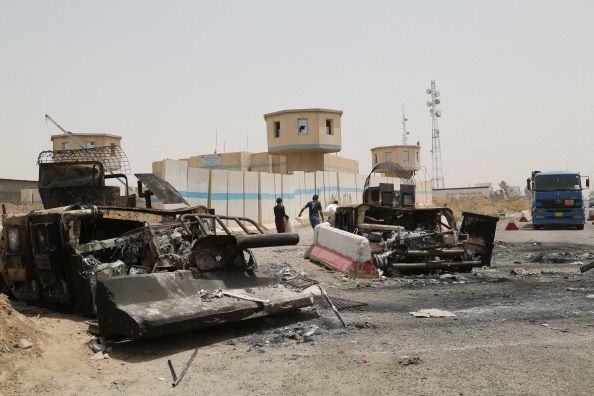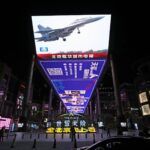ISIS: The unsurprising surprise that is sweeping Iraq
By Charles P. Blair | June 18, 2014

Just four years ago, “broken” was the word used by the United States’ top Army general to describe Al Qaeda in Iraq. On that day in June 2010, Army Chief of Staff Raymond T. Odierno explained that in the preceding three months, more than 80 percent of the group's leaders had been “either picked up or killed” and that the remaining leaders were virtually abandoned, having “lost connection with [Al Qaeda’s senior leadership] in Pakistan and Afghanistan.” Eighteen months later, as the final US military forces left Iraq, a similarly sanguine US Army Lt. Gen. Frank Helmick reflected on a bright future for the Iraqi security forces. Helmick, who led the attack on Mosul in 2003 before taking other senior US military leadership roles in Iraq, said that when he arrived, “The Iraqis did not have an army. They did not have a navy. They did not have an air force. So we didn't rebuild anything; we built their military.” And what a military it was: According to information released in the March 2013 "Final Report by the Special Inspector General for Iraq Reconstruction," from the start of Operation Iraqi Freedom until September 2012, the US alone spent $25 billion to equip and train Iraq’s security forces and build and maintain the military installations they needed. These billions represent one-third of all US aid to Iraq from 2005 through 2012.
But just two and a half years later, Iraqi security forces have “crumbled in disarray” before the successor group to Al Qaeda in Iraq, ISIS, or the Islamic State of Iraq and al-Sham. Despite taking on three foes—the Syrian government, the Iraqi government, and several Sunni rebel forces—ISIS now seems virtually unstoppable. Only Shiite militias appear capable of blunting the ISIS drive south. The group's seizure of Mosul last week—and advance toward Baghdad—triggered dismay around the globe. Many observers, including some at high governmental levels, are simply asking, “What the hell is this ISIS thing?”
But current events come as little surprise to those who have monitored ISIS activities over the past year, as the group displayed clear goals, high motivation, sophisticated capabilities, and more than enough financing to carry out a campaign to create an Islamic caliphate.
An unpublicized history. Much of the global “surprise” surrounding ISIS’ perceived sudden appearance in Iraq has to do with ignorance of, or at least a lack of clarity about, the group's origins, which date back well over a decade. In 2000, seeking a platform from which to overthrow the Jordanian monarchy, Abu Musab al-Zarqawi founded the terrorist group Jama'at al-Tawhid wa al-Jihad (JTJ). Initially Zarqawi trained jihadist volunteers in Herat, Afghanistan. But after the 2001 US invasion of Afghanistan, Zarqawi sought refuge in the border regions of Iran and in the Kurdish autonomous area of northern Iraq, a region controlled by the Kurdish Sunni extremist group Ansar al-Islam. From there he plotted spectacular, yet often unrealized, attacks. (One plot against Jordan’s intelligence service reportedly involved unspecified chemical warfare agents and supposedly aimed to cause thousands of casualties). During this time, Zarqawi also targeted various officials somehow linked to the Jordanian government, including US Aid for International Development officer Lawrence Foley, killed in 2002. As the Iraqi insurgency began unfolding in 2004, Zarqawi swore allegiance to Al Qaeda’s then-leader, Osama bin Laden. With this affiliate status, JTJ’s name changed to Tanzim Qa'idat al-Jihad fi Bilad al-Rafidayn or Al Qaeda in Iraq.
Al Qaeda in Iraq quickly became notorious for its sheer brutality, including beheadings (some performed by Zarqawi himself), the targeting of Shiite mosques and other religious institutions, and the willingness to kill unprecedented numbers of Iraqi civilians, especially Shiites, in high-profile suicide and vehicle-borne improvised explosive device attacks. In 2005, fearing that such inordinate actions alienated Iraq’s Sunni population and other potential supporters and were out of line with Al-Qaeda’s broader strategic vision, then-deputy of Al Qaeda central, Ayman al-Zawahiri, appealed to Zarqawi to mend relations with Iraqi Sunni leaders. Zarqawi remained unmoved by such pleas; to the likely relief of Al Qaeda central, he was killed in a targeted US air strike in June 2006. Al Qaeda in Iraq subsequently attempted to rebound from the loss of Zarqawi, renaming itself the Islamic State of Iraq, eventually appointing Abu Abdullah al-Rashad al-Baghdadi (no relation to the group's current leader of the same last name, Abu Bakr al-Baghdadi) as its emir.
With the 2007 US military surge and the concomitant anti-Al Qaeda “Anbar awakening" finding success, the operational capabilities of the Islamic State of Iraq declined sharply. Indeed, in 2008 Al Qaeda central reportedly sent a series of letters to Baghdadi, questioning his leadership while noting that Islamic State of Iraq’s situation was “dire.” In mid-2010, just four years after the death of Zarqawi, Baghdadi was killed in a joint US-Iraqi military operation. With Vice President Joe Biden declaring that Baghdadi’s death was a “potentially devastating blow to Al Qaeda in Iraq,” things looked promising for Iraq, and the US proceeded with its full military withdrawal over the next 16 months.
Immediately following the withdrawal, however, the Islamic State of Iraq began to recover. Once US forces left in December 2011, the Shia-dominated administration of Prime Minister Nouri al-Maliki began to purge Sunnis from the government, breaking his promise to integrate Sunnis into Iraq’s security forces, and disbanded the Sahwa militias formed by the coalition of tribal leaders that led the anti-Al Qaeda Anbar awakening. Al Qaeda in Iraq was able to take advantage of Maliki’s despair-inducing “Shia triumphalism” and to attract dissatisfied Sunnis to their cause.
Now led by a new emir, Abu Bakr al-Baghdadi, the Islamic State of Iraq sought to escalate strains among Iraqi sectarian groups and ethnic minorities and undermine the government’s ability to maintain security through a new wave of violence. The National Consortium for the Study of Terrorism and Responses to Terrorism’s Global Terrorism Database reveals a 10-fold increase from 2011 to 2012 in terrorism incidents attributed to Al Qaeda in Iraq, from 32 to 301, respectively. One year later, in assessing the group’s activity in Iraq in 2013, the US State Department noted that attacks had now reached “levels not seen since 2007.”
In addition to the swiftly declining security situation in Iraq, the radicalization and intensification of the Syrian conflict drove the Islamic State of Iraq’s resurgence. Just before the US withdrawal from Iraq was complete, Baghdadi sent a small contingent, led by his lieutenant Abu Mohammed al-Joulani, into Syria to establish what he believed would be Islamic State of Iraq’s Syrian component: Jabhat al-Nusra. Within a year, Jabhat al-Nusra was regarded as one of the best anti-Assad fighting forces. Bolstered by Jabhat al-Nusra’s success, in April 2013 Baghdadi shifted his headquarters to Syria and publicly merged the Islamic State of Iraq with Jabhat al-Nusra under the banner of the Islamic State of Iraq and al-Sham. Unhappy with the merger and loss of autonomy, which he correctly viewed as a power play by Baghdadi, the leader of Jabhat al-Nusra, Joulani, rejected the merger. Even with intercession by Al Qaeda chief Zawahiri (who sought Jabhat al-Nusra as the primary Al Qaeda affiliated group in Syria), Baghdadi remained resolute, and Jabhat al-Nusra and ISIS split.
ISIS quickly established zones of control in eastern and northern Syria, including key border areas used for transport. In doing so, an on-the-ground observer noted last December, “ISIS has changed the course of the Syrian war. It has forced the mainstream Syrian opposition to fight on two fronts. It has obstructed aid getting into Syria, and news getting out.” ISIS made its new presence felt on the battlefield with its role in the critical battle for control of Menagh airbase near Aleppo. The 10-month siege of the airbase ended with victory over Assad’s forces in early August 2013, when ISIS fighters—led by northern sector commander Umar al-Shishani—were able to achieve what other opposition forces could not. With two Chechen suicide attackers initiating the first strike, ISIS successfully took the airbase and from that point forward established itself as one of leading opposition forces in Syria.
Significantly, ISIS likely engaged in more battles with opposition forces than with pro-Assad forces. Baghdadi emphasizes the creation of an Islamic caliphate—stretching across the eastern Mediterranean—over the immediate toppling of the Assad regime, which seemed content to leave ISIS alone while focusing on the destruction of other rebel groups.
Al-Qaeda central increasingly viewed the brutal excesses of ISIS in Syria as a liability. Open warfare ensued as Jabhat al-Nusra and other rebel forces battled Baghdadi’s group. According to the Syrian Observatory for Human Rights, during the month of January 2014 alone, more than 2,300 civilians and combatants from the rival groups died in the internecine struggle. On February 2, 2014 Al Qaeda disaffiliated itself from ISIS.
By then ISIS had significantly expanded its operations in Iraq. Earlier, on July 12, 2012, Baghdadi announced the start of a one-year military campaign he called, “Breaking the Walls.” Consisting of eight prison breaks and 24 major vehicle-borne IED attacks, the campaign began on July 21, 2012 and ended on July 21, 2013. Jessica Lewis, research director at the Institute for the Study of War, notes that Breaking the Walls set the stage for recent ISIS activities that aim to “retake territory that the group formerly controlled and to establish governance in parts of Iraq and Syria.”
A defined goal, good motivation, plenty of money. Ultimately, Baghdadi seeks to aid in, if not lead, the creation of global Sharia rule. Baghdadi currently hopes to create a caliphate across the eastern Mediterranean. Following the US invasion of Iraq in 2003, Baghdadi reportedly joined the armed rebellion, fighting in Anbar province which, at the time, was Zarqawi’s stronghold. Arrested in 2006, like Zarqawi, Baghdadi reportedly was fully radicalized while in prison. Released in the late 2000s, Baghdadi joined the Islamic State of Iraq, swiftly climbing the ranks. While little else is publicly known about Baghdadi, there is little doubt that he is a committed and utterly ruthless strategist who considers himself the supreme jihadist leader of this century.
ISIS is composed of 16 vilayets (or provinces); nine in Syria and seven in Iraq. (The group is also reportedly active in Gaza and Beirut.) ISIS likely has 3,000 to 5,000 fighters in Syria and up to 6,000 fighters in Iraq, and, according to the Washington Institute for Near East Policy, a large number of ISIS personnel are foreign-born. North Caucasus jihadi expert Gordon Hahn estimates that total forces in Iraq and Syria are roughly split between Syrians and Iraqis (40 percent each), with foreigners comprising 20 percent. Other estimates put foreigners at 30 percent, many of whom defected from Jabhat al-Nusra to the more extreme ISIS when the two organizations split. Already certain to rise due to ISIS’ dramatic successes in Iraq, the organization’s numbers would likely significantly increase if Baghdadi were to declare a caliphate in adjoining areas of Syria and Iraq (e.g, what ISIS has control over now). Already a magnet for foreign fighters, ISIS could attract hundreds—maybe thousands—of additional recruits through such a declaration, Hahn says.
ISIS’ personnel are highly motivated, for two primary reasons. First, they reportedly earn up to three times the going rate in other rebel groups, up to $400 per month. Second, ISIS members likely perceive that they are achieving their goals in an ideologically consistent manner, battling Sunnis who they believe are insufficiently pious and killing Shia and secular “heathen” opponents.
ISIS has greatly built upon and magnified the operational capabilities of its earlier manifestations, demonstrating depth in both specialized and technical skill sets and a propensity to innovate. Through specific knowledge about targets and the use of suicide bombers and large explosive devices, ISIS has made Syria and Iraq the world leaders in casualties per terror attack. Other examples of ISIS’ operational capabilities can be found in several of the eight prison attacks it conducted during the Breaking the Walls campaign, Lewis notes.
ISIS is a multi-tiered military organization that displays a robust command and control system, and, Lewis correctly notes, it enjoys “unconstrained communication among teams as well as unconstrained access to human capacity and materiel.” Lewis’ study of ISIS during the Breaking the Walls campaign demonstrates how the organization, “maintained its initiative while reacting to events in Syria; to the actions of political figures in Iraq; and to the operations of Iraqi Security Forces.” The phases of the campaign, Lewis continues, “align with a shockingly symmetrical planning calendar that may very well have progressed with minimal disturbance for the entire year.”
Having engaged a variety of opponents on the Syrian battlefield—including Hizballah, a Lebanon-based Shia terror group—ISIS is adept at guerilla warfare, something the Iraqi Army struggles with. “You fight Hizballah for a couple of years, and you either die, or you get a lot better,” Douglas Ollivant, a former Army officer who dealt with Iraq for the White House National Security Council, told Time magazine. “And these guys got a lot better.” Moreover, ISIS frequently conducts simultaneous attacks, sometimes separated by many hundreds of miles.
By the fall of 2013 it was clear that ISIS was the most powerful single military rebel force in the region. Tactical successes were driven by its capacity to plan and execute highly complex operations and to successfully utilize social media to recruit suicide bombers and other fanatics. But a primary reason for ISIS's strategic success is financial. Although estimates of its income vary greatly, the group's seizure of Syrian oil and gas fields is estimated to yield it some $2 million per day—and possibly far more. Syrian power plants have also fallen under ISIS control; the group reportedly sells the plants’ electricity back to the Assad government. Robbery, looting, kidnapping, and ransoms bring ISIS additional resources. Syria’s archeological sites and an array of factories have been ransacked and their contents sold or traded. ISIS has also “taken control of grains and cotton production in the eastern regions” of Syria, reportedly netting the group $20 million, the Al-Akhbar English website has reported.
In Iraq, ISIS has continued its pattern of extortion and seizure. In its latest campaign, ISIS has taken numerous oil and gas facilities, while threating to win the Baiji refinery, Iraq’s largest (representing over a quarter of Iraq’s refining capability). Most significant, when ISIS captured control of Mosul—Iraq’s second largest city—last week, the group also seized the equivalent of $429 million from the city’s central banking system. ISIS has also benefitted from the reported hundreds of millions of dollars from Gulf states that reaches Sunni extremist fighters in Syria. In sum, in a report released on June 16, the British House of Commons estimated that ISIS’ cash and assets likely total well over $2.5 billion.
These financial resources enable ISIS to effectively battle two governments and a variety of militias simultaneously, allowing the group to maintain its troop strength, even after sharp losses, by attracting, training, and equipping the best non-state fighters, tacticians, and support troops from the region and around the world.
The shock that shouldn't have been shocking. Successful ISIS assaults last week on Mosul and Tikrit were not bolt-out-of-the-blue attacks. Last year, analysts like Lewis were pointing out that post-Breaking the Walls, ISIS was a sophisticated military organization with the ability to conceive and to carry out multiple coordinated attacks across Iraq. On-the-ground indicators of this sophistication abound, including, for example, a highly complex ISIS operation in December 2013 that successfully decapitated the Iraqi military leadership responsible for Anbar Province, the 7th Iraqi Army Division. That operation provided access to Anbar’s western towns—especially Rutbah, where the attack occurred—giving ISIS greater logistical depth while it prepared itself for its recent taking of major Iraqi cities.
Two recent events show just how powerful and brazen ISIS had become: On March 20, 2014, it conducted very public and heavily militarized parades in Fallujah and in Abu Ghraib, just two miles from Baghdad. The parades, ISIS leadership likely understood, were highly symbolic, taking place in Fallujah, a city that the US had spent lives and fortunes to control during Operation Iraqi Freedom, and Abu Ghraib, home of the prison that, because of the release of degrading photos taken inside it, became emblematic of US ill-treatment of Iraqi fighters and civilians.
Before the fall of Mosul, ISIS had already badly damaged Iraqi forces. In the first five months of this year, the group reportedly shot down six helicopters and damaged another 60. “In the same period,” according to one US official, “28 M-1 tanks were damaged and five tanks sustained full armor penetration by antitank guided missiles."
Going back as far as Zarqawi, ISIS’s progenitors consisted of relatively small networks of discordant militants—organized to some degree, yet always susceptible to great disruption in the event a leader was killed. This is distinctly not the case with ISIS.
While there are clear indications that Iraq’s security forces simply buckled under pressure from ISIS, closer examination reveals that Iraqi security forces were also significantly out-strategized. Indeed, ISIS’ military commander in Iraq was trained by the United States. Umar al-Shishani—an ethnic Chechen from the “Kist” sub-group who grew up in Georgia and later served in its US-funded Army—is commander of ISIS’ northern sector, which is now leading ISIS forces in northern Iraq. According to Hahn, the north Caucasus jihadi expert, Shishani’s military background includes training in the US-sponsored Georgian Train and Equip Program (GTEP), an effort aimed at enhancing Georgia’s “counter-terrorism capabilities and [addressing] the situation in the Pankisi Gorge" area of that country. Because he was trained by the United States, Hahn says, Shishani “probably has a good understanding of the Iraqi Army’s strategy.”
Editor's note: Along with several other experts, Charles Blair will lead a short-course on terrorism at George Mason University on July 14-16. Open to government analysts and the public, the course will examine evolving technologies, strategies and tactics, radicalization, counterterrorism strategies, red teaming, and case studies of terrorist groups, including ISIS and Jabhat al-Nusra.
Together, we make the world safer.
The Bulletin elevates expert voices above the noise. But as an independent nonprofit organization, our operations depend on the support of readers like you. Help us continue to deliver quality journalism that holds leaders accountable. Your support of our work at any level is important. In return, we promise our coverage will be understandable, influential, vigilant, solution-oriented, and fair-minded. Together we can make a difference.
Topics: Analysis, Special Topics, Technology and Security














